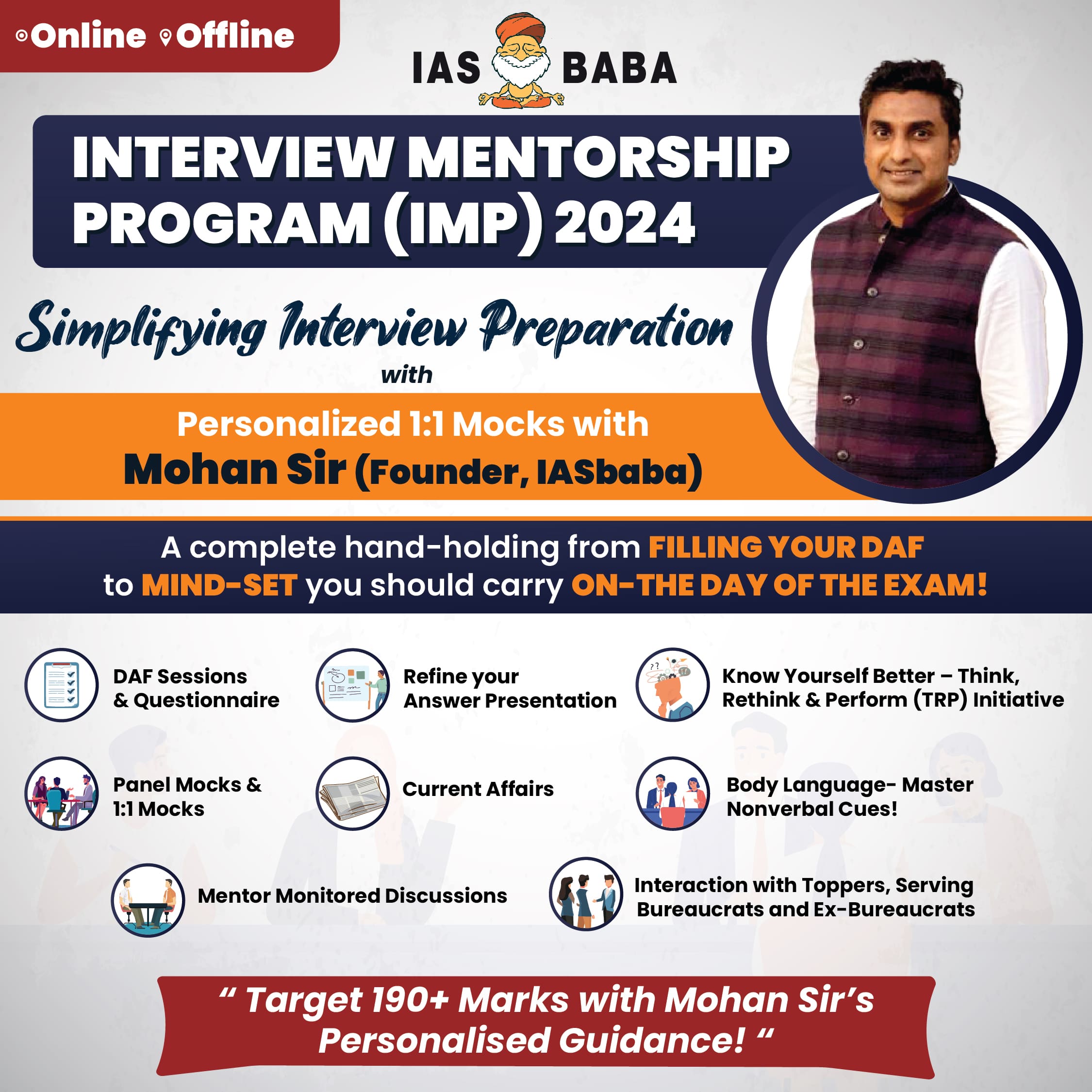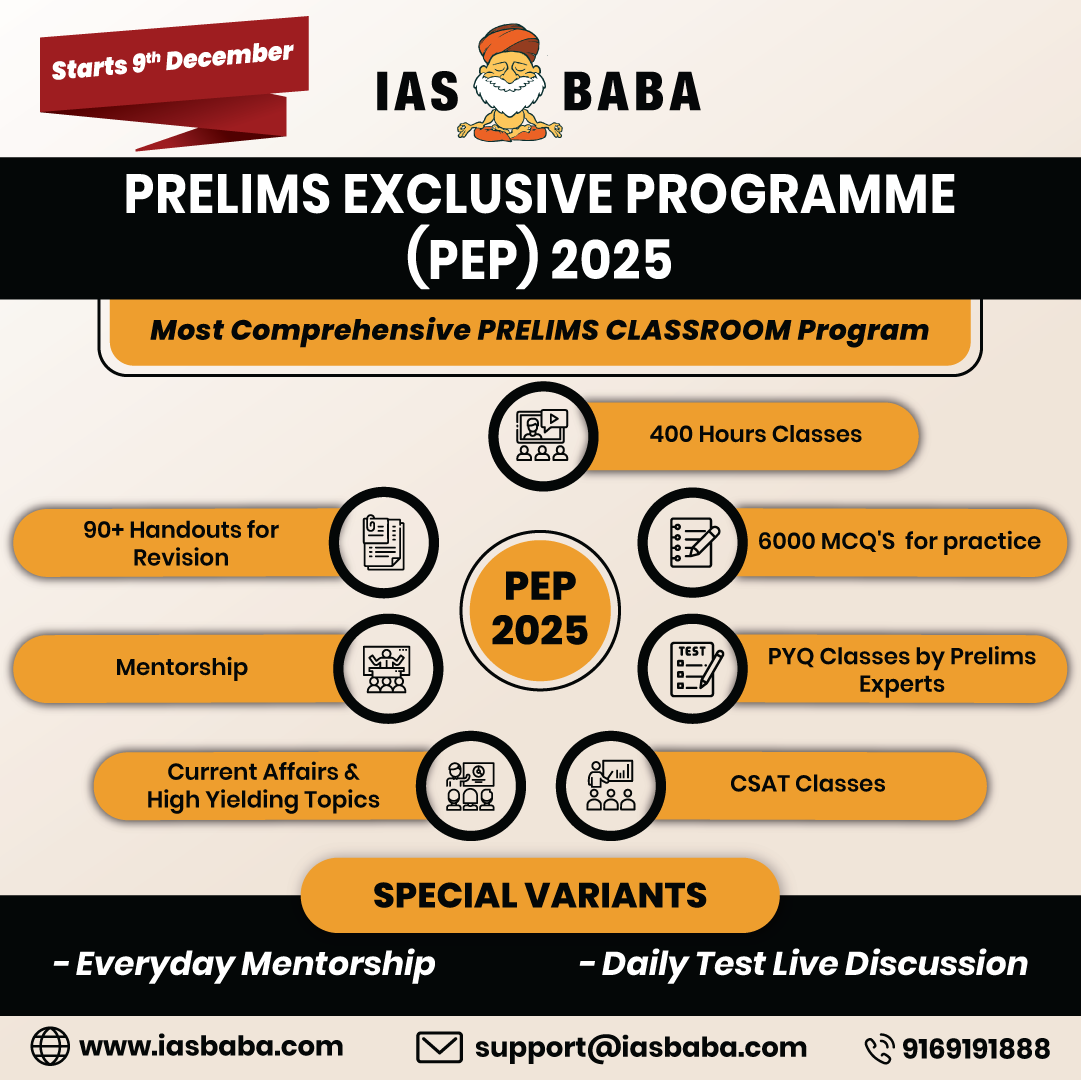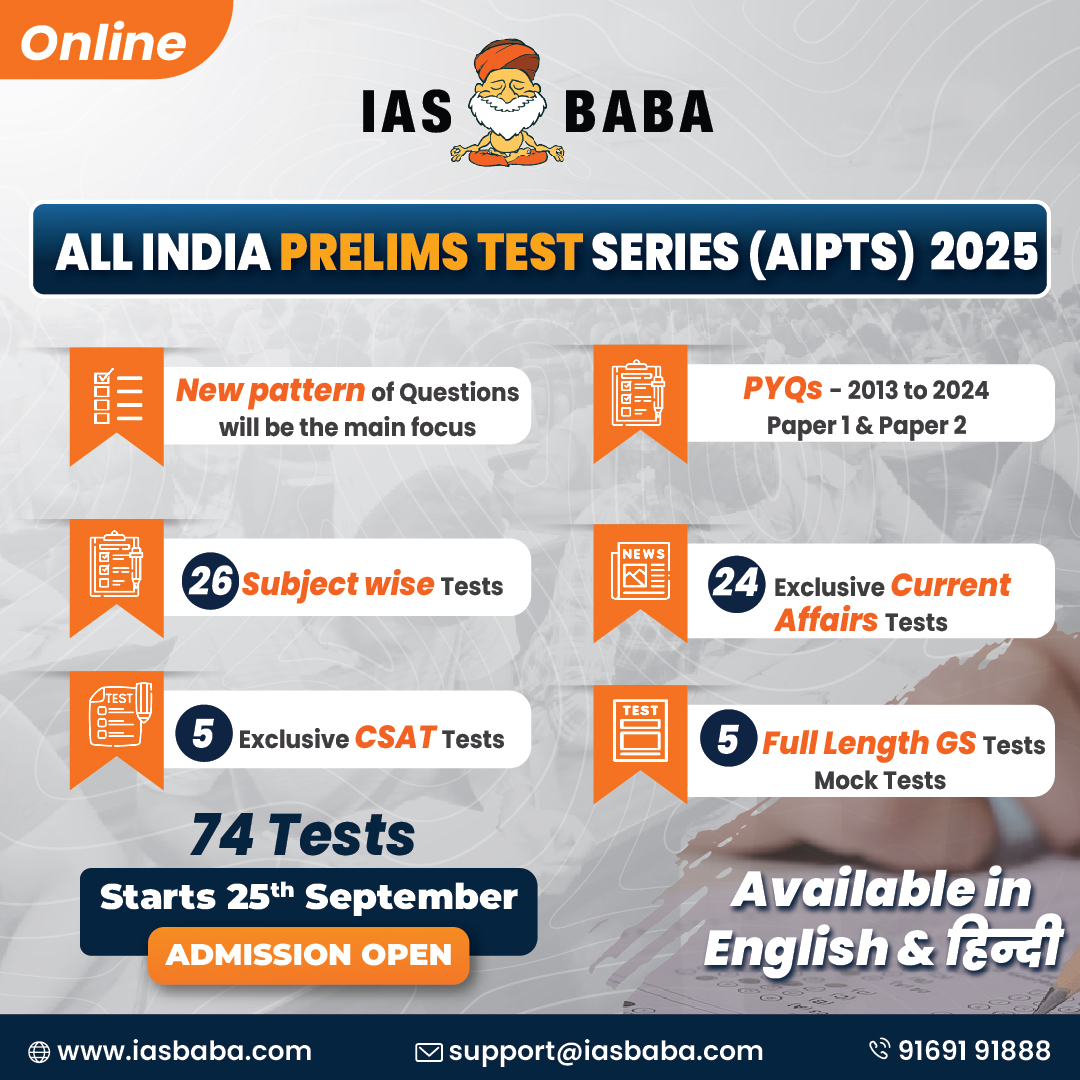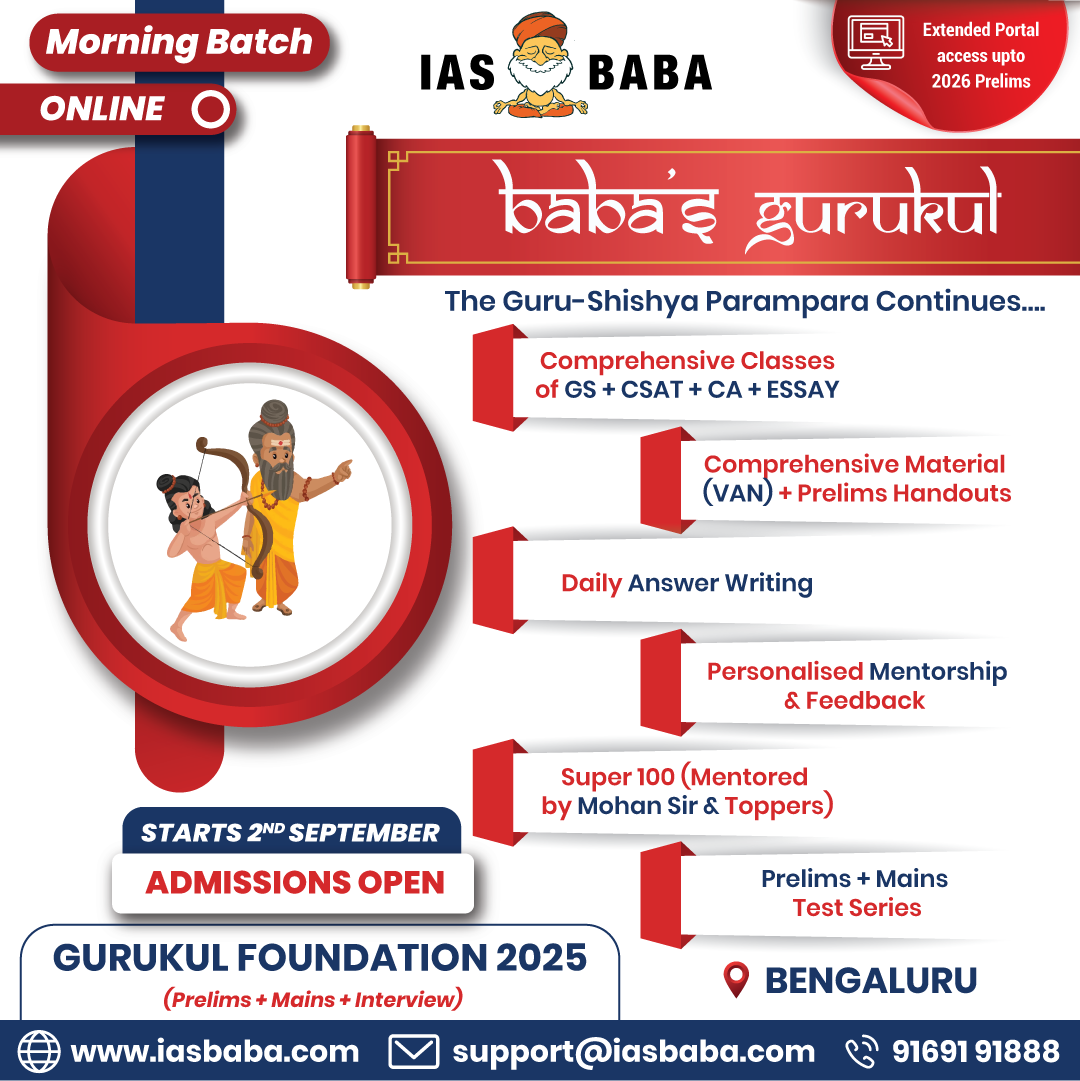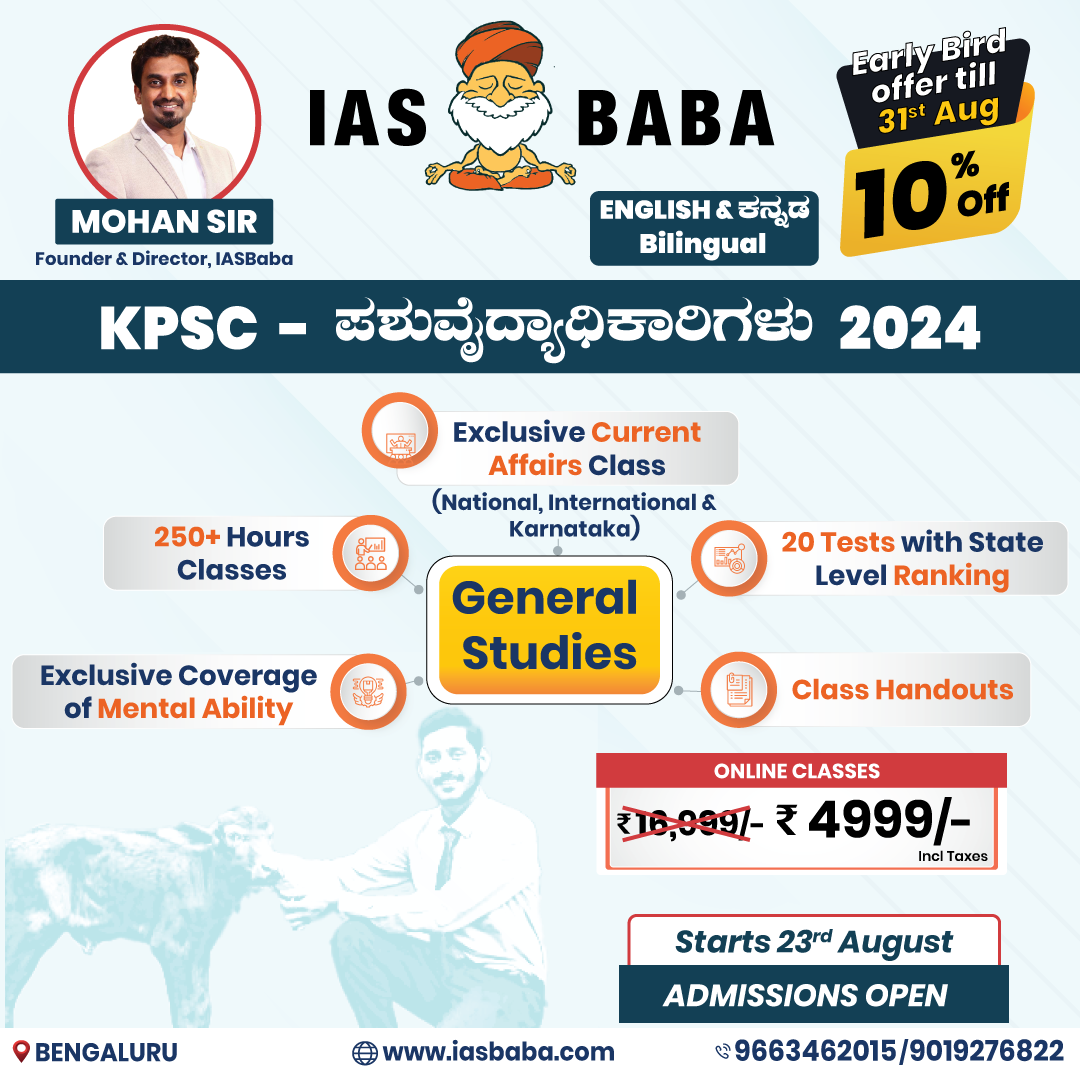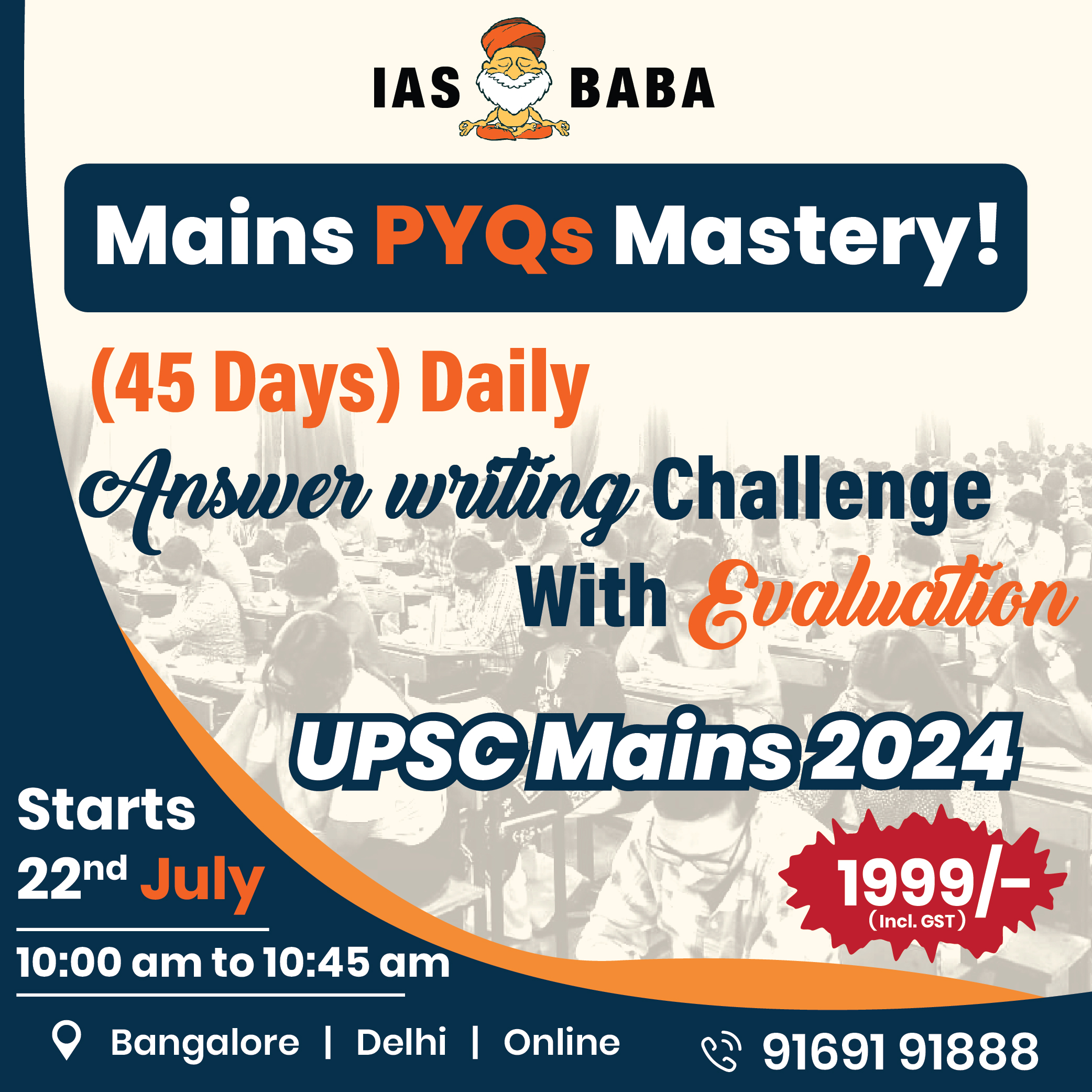IASbaba's Daily Current Affairs Analysis
Archives
(PRELIMS + MAINS FOCUS)
Vanniyar quota law
Part of: Prelims and GS-II -Policies and interventions
Context The Supreme Court has held that admissions to higher education institutions and appointments to Tamil Nadu’s government jobs made this year under the Vanniyar quota would not be disturbed.
- However, SC has barred fresh appointments and admissions until February 15 next year.
What is Vanniyar Movement?
- Vanniyars are one of the largest and most consolidated backward communities in Tamil Nadu.
- They had raised massive protests in the mid-1980s demanding 20% reservation in the state, and 2% in central services.
- During agitation from September 17 to 23, 1987, many protesters were killed.
- Split of OBC quota: In 1989, the OBC quota was split into two: Backward Castes and Most Backward Castes.
- Vanniyars were categorised among the MBCs with 107 other communities, with 20% reservation.
- Three decades later, the state government passed a Bill, and the current government has implemented it with a Government Order ensuring 10.5% reservation for Vanniyars within the 20% MBC quota.
Omicron slow to infect the lungs: Hong Kong study
Part of: Prelims and GS-II – Health
Context According to the study by researchers from the LKS Faculty of Medicine at the University of Hong Kong, the Omicron variant of SARS-CoV-2 infects and multiplies faster than the Delta variant and original SARS-CoV-2 in the human bronchus.
- The study may explain why it may transmit faster between people than previous variants.
Key findings of the study
- Omicron does not easily infect the lower lungs and this potentially explains why instances of severe disease are lower in cases involving Omicron.
- Omicron replicated around 70 times higher than the Delta variant and the original SARS-CoV-2 virus over 24 hours.
- In contrast, the Omicron variant replicated less efficiently (more than 10 times lower) in the lung tissue than the original SARS-CoV-2 virus.
- The severity of disease is not determined only by virus replication but also by the host immune response, which may lead to dysregulation of the innate immune system.
- By infecting many more people, a very infectious virus may cause more severe disease and death even though the virus itself may be less pathogenic.
Sanctions against China over abuse of Uighurs
Part of: Prelims and GS-II – International Relations
Context USA is imposing new sanctions on several Chinese biotech and surveillance companies and government entities over human rights abuses of Uighur Muslims
- The move will bar American companies from selling components to the entities without a licence.
About Uighurs
- Uigurs, are a minority Turkic ethnic group originating from and culturally affiliated with the general region of Central and East Asia.
- The Uighurs are recognized as native to the Xinjiang Uyghur Autonomous Region of the People’s Republic of China.
- China rejects the idea of them being an indigenous group
- Since 2016, it is estimated that over a million Uyghurs have been detained in Xinjiang re-education camps.(UN)
- International Consortium of Investigative Journalists (ICIJ), the main feature of the camps is to ensure adherence to Chinese Communist Party ideology.
Super Typhoon Rai
Part of: Prelims and GS I – Geography
Context Super Typhoon Rai has hit the Philippines.
About Typhoon
- Typhoon and hurricane are two of the regionally specific names for strong tropical cyclones
- Tropical cyclones are rotating, organized systems of clouds and thunderstorms that originate over tropical or subtropical waters and have closed, low-level circulation.
- What a tropical cyclone gets called is determined by the ocean it forms over and how severe it becomes.
- In the North Atlantic, central North Pacific, and eastern North Pacific, tropical cyclones are called hurricanes.
- In the Northwest Pacific, they are known as typhoons.
Super Typhoon
- Since 2009 the Hong Kong Observatory has divided typhoons into three different classifications: typhoon, severe typhoon and super typhoon.
- A typhoon has wind speed of 118–149 km/h, a severe typhoon has winds of at least 150 km/h, and a super typhoon has winds of at least 190 km/h.
(News from PIB)
The Chalcolithic cultures of Central India
Part of: Prelims – Culture
A. Excavation at Eran: Eran (ancient Airikina) is situated on the left bank of the Bina (ancient Venva) river and surrounded by it on three sides.
- The recent excavation at this site, during 2020-21, has unearthed a variety of antiquities including a copper coin, an iron arrowhead, terracotta bead, stone beads along with a copper coins, stone celt, beads of steatite and jasper, glass, carnelian, terracotta wheel, animal figurines, miniature pots, iron objects, stone querns, pestles and a red slipped terracotta with inscription in Devnagari.
- The occurrence of few specimens of plain, thin grey ware is noteworthy.
- The use of iron was evidenced by few metallic objects at the site.
B. Excavation at Tewar: Tewar (Tripuri) village is located 12 km west of Jabalpur district on Jabalpur – Bhopal highway.
- During 2020-21 ASI conducted excavation of Tewar at two locations, this excavation did not reach the natural soil and revealed four folds of cultural sequences i.e. Kushana, Shunga, Satvahana, and Kalachuri.
- Antiquarian remains in this excavation include viz remains of sculptures, hopscotch, terracotta balls, Iron nails, copper coins, terracotta beads, implements of Iron and terracotta figurine, in ceramics red ware, black ware, red slipped ware with shapes of handi, bowl, spouted pot, small pot, big jar, etc., structural remains consist of brick wall and structure of sandstone columns.
News Source: PIB
Samudrayaan Project
Part of: Prelims
Context: Under the Deep Ocean Mission launched by the Government of India, a manned scientific submersible has been proposed to be developed for deep ocean exploration and mining of rare minerals. The project is named as Samudrayaan.
- National Institute of Ocean Technology (NIOT), an autonomous Institute under the Ministry of Earth Sciences, had developed and tested a ‘personnel sphere’ for a manned submersible system for 500 metre water depth rating.
- Personnel Sphere of 2.1m diameter to be used as a crew module up to 500 m water depth has been developed using mild steel and tested up to 600 m water depth in the Bay of Bengal using the research Vessel Sagar Nidhi during October, 2021.
- One Titanium alloy personnel sphere for manned submersible system for 6000 metre water depth rating, is under development
News Source: PIB
State of Foundational Literacy and Numeracy in India
Part of: Mains GS-II: Education
In News: The Economic Advisory Council to the Prime Minister (EAC-PM) released the report on the State of Foundational Literacy and Numeracy in India. The report prepared by the Institute for Competitiveness highlights the importance of early education years in the overall development of a child. It further highlights the role of well-planned early interventions like the National Education Policy (2020) and the NIPUN Bharat guidelines, leading to long-term improved learning outcomes.
- Access to quality early childhood education is a fundamental right for all children. The earliest years of a child’s life needs to be understood in the backdrop of the socio-economic, psychological, and technological hindrances they face, which further affects the potential of a child in numerous ways.
- Building the Foundation: A child needs to develop solid Foundational Literacy and Numeracy (FLN) skills. FLN refers to basic reading, writing, and mathematics skills. Falling behind in the Foundational Learning years which encompass of preschool and elementary education makes children more vulnerable as it negatively impacts their learning outcomes. In addition to the existing issues pertaining to foundational learning years, the ongoing pandemic has highlighted the importance of technology in overall child’s education. Therefore, focus on the foundational learning is the need of the hour to ensure universal access to quality levels of education for all children in pre-primary and primary classes in India.
The Index on Foundational Literacy and Numeracy is the first step in this direction, establishing an understanding of the overall state of Foundational Learning across children aged below ten years in Indian States and Union territories. The Index includes five pillars comprising of 41 indicators.
- Educational Infrastructure
- Access to Education
- Basic Health
- Leaning Outcomes
- Governance
India is committed to achieve the Sustainable Development Goals 2030. Zero Hunger, Good health and Well-being and Access to Education are the significant goals that have been mapped with the Index on Foundational Literacy and Numeracy.
Key Highlights:
- Some states may serve as role models for others in certain aspects, but they too need to learn from other states while addressing their challenges. This holds true not only for high performers but also for low performing states.
- States have performed particularly worse in the Governance pillar because over half of the states have a score that is below the national average, i.e., 28.05, the lowest across all pillars. These pillar-wise analyses help states assess the state of the budgetary measures and steps needed to improve the state of education and identify existing gaps that obstruct their growth.
- The issue of Access to Education is one that demands prompt action on the part of the States. The performance of Large States such as Rajasthan (25.67), Gujarat (22.28), and Bihar (18.23) is noticeably below average. Whereas the North-eastern states have the highest scores as a result of their superior performance.
News Source: PIB
Miscellaneous
Possible largest nuclear power generating site: To be established at Jaitapur in Maharashtra with a total capacity of 9900 MW
(Mains Focus)
WOMEN/ SOCIETY/ GOVERNANCE
- GS-1: Society (Women’s Issues)
- GS-2: Government policies and interventions for development in various sectors and issues arising out of their design and implementation.
Legal Age of Marriage
Context: The Union Cabinet has raised the legal age of marriage for girls to 21 on the recommendations of the four-member task force led by former Samata Party chief Jaya Jaitly.
What is the minimum age of marriage?
- Personal laws that govern marriage and other personal practices for communities prescribe certain criteria for marriage, including age of the bride and groom.
- For example, Section 5(iii) of The Hindu Marriage Act, 1955, sets a minimum age of 18 for the bride and 21 for the groom. This is the same for Christians under the Indian Christian Marriage Act, 1872 and the Special Marriage Act.
- For Muslims, the criteria is attaining puberty, which is assumed when the bride or groom turns 15.
Why is there a minimum age?
- Essentially to outlaw child marriage.
- This is done through special legislation such as the Prohibition of Child Marriage Act, 2006 and the Protection of Children from Sexual Offences Act, 2012.
- Under the Child Marriage Prevention Act, any marriage below the prescribed age is illegal and the perpetrators of a forced child marriage can be punished.
What happens to such marriages once detected?
- Child marriages are illegal but not void.
- It is voidable at the option of the minor party. This means the marriage can be declared void by a court only if the minor party petitions the court.
- This flexibility is kept to ensure that the rights of the minor, especially the girl, is not taken away in marital homes later on.
- However, if a court finds a minor was coerced into marriage by parents or guardians, the provisions of the Juvenile Justice (Care and Protection of Children) Act come into effect to keep the custody of the minor until he or she attains majority and can make a decision on the marriage.
What was the rationale behind increasing legal age?
- The task force was set up by the WCD Ministry to re-examine age of marriage and its correlation to health and social indices such as infant mortality, maternal mortality, and nutrition levels among mothers and children.
- Committee has said the recommendation is not based on the rationale of population control (India’s total fertility rate is already declining) but more with women’s empowerment and gender parity.
- The committee has said access to education and livelihood must be enhanced simultaneously for the law to be effective.
What laws will have to be changed to raise the minimum age of marriage?
- First, the age limit in the Prohibition of Child Marriage Act will have to be changed.
- The government had indicated this will be followed by necessary changes in personal law. The Hindu Marriage Act, the Indian Christian Marriage Act and the Special Marriage Act will also have to be change consequently.
- However, changes in the Muslim law could raise significant legal issues.
The opposition
Experts have been opposing a raised age of marriage on two broad counts.
- First, the law to prevent child marriages does not work. While child marriage has declined, it has been marginal: from 27% in 2015-16 to 23% in 2019-20, according to National Family Health Survey (NFHS) 5. The decrease was, however, dramatic in NFHS 4, from 47% in NFHS 3.
- The marriage age at 18 was set in 1978, but child marriage started to decline only in the 1990s, when the government stressed primary education of the girl child and took measures to reduce poverty.
- Often the girl child drops out after primary school simply because she has no access to higher education, and is then married off.
- According to the State of the World Report 2020 by UNFPA, in India, 51% of young women with no education and 47% of those with only a primary education had married by age 18, compared to 29% of young women with a secondary education and 4% with post-secondary education.
- The second objection being raised is the criminalisation of a large number of marriages that will take place once the law comes into effect. While 23% of marriages involve brides under age 18, far more marriages take place under age 21.
- The median age at first marriage for women aged 20-49 increased to 19 years in 2015-16 from 17.2 years in 2005-06, but remained under 21 years.
What are these legal issues?
- The Prohibition of Child Marriage Act does not contain any provision that explicitly says the law would override any other laws on the issue. And there is an obvious discrepancy in the letter of the law between the Prohibition of Child Marriage Act and Muslim law on the minimum age of marriage.
- For example, although the marriage of a 16-year-old girl deemed to have attained puberty is not considered invalid in Muslim law, it would be a child marriage under the Prohibition of Child Marriage Act.
- Additionally, the Supreme Court, in a landmark 2017 verdict, has held that in case of a minor wife, the law recognises marital rape. Husbands of minor women, as opposed to husbands of adult women, cannot enjoy the blanket immunity that the Indian Penal Code provides in Exception 2 to Section 375 against charges of marital rape.
Can Muslim law be amended too?
- Muslim law is a mere codification of Shariah law.
- In Shayara Bano v Union of India, the case in which the Supreme Court declared the practice of instant triple talaq as unconstitutional, one of the key questions was whether the Supreme Court could quash a religious or divine law.
- The court said all personal laws will have to fall under the constitutional framework and will be subject to public order, morality and health.
- Experts suggest the minimum age of marriage can be justified under public health. However, there are several differing verdicts from high courts on this issue.
-
- In February this year, the Punjab and Haryana High Court granted protection to a Muslim couple (a 17-year-old girl married to a 36-year-old man), holding that theirs was a legal marriage under personal law. The HC examined provisions of the Prohibition of Child Marriage Act but held that since the special law does not override personal laws, Muslim law will prevail.
- In other cases, the Karnataka and Gujarat High Courts have held that the 2006 special law would override personal laws and have sent the minor girl to a care facility.
Which sections of society will be most affected due to rise of legal marriage age?
- Experts noted that 70% of early marriages take place in deprived communities such as SCs and STs, and said the law will simply push these marriages underground instead of preventing them.
- According to NFHS 4 (2015-16), the median age at first marriage for women aged 25-49 is higher among the social categories of Others (19.5 years), OBC (18.5), ST (18.4) and SC (18.1).
- The experts said rural women will be affected more than urban women. According to NFHS 4, the median age at first marriage (age 25-49) for urban women (19.8) is 1.7 years more than that for rural women (18.1).
Connecting the dots:
ECONOMY/ GOVERNANCE
- GS-3: Indian Economy and challenges
- GS-2: Government policies and interventions for development in various sectors and issues arising out of their design and implementation.
Reimagining Self-Help Groups (SHGs)
Context: SHGs were created for providing financial access and gradually metamorphosed into the world’s largest microfinance program, where multiple agencies, NGOs, governments, banks work in unison.
- The first SHG was linked by Bangarpet Branch of Vysya Bank in Kolar district, Karnataka.
- RBI made this unconventional idea of linking informal women groups to formal banks, possible.
The salient features of a good SHG are
- Homogeneity
- Regular meetings
- Savings
- Book-keeping
- Accessing bank credit (usually 4-times their savings)
- Inter-lending and on-time repayment.
Progress of SHGs
- SHGs moved a long way, from the policy intention in 1992, to link 500 SHGs to banks. Now, there are about 1.2 crore SHGs.
- Their savings deposit is about, ₹37,500 crore and outstanding credit ₹1,03,000 crore.
- But, average loan outstanding per SHG at about ₹1.80 lakh (₹15,000-per member-considering 12 women per SHG) and percentage of non-credit linked SHGs at about 50 per cent has almost remained same.
- Considerable investments in community mobilisation through SHGs and capacity building resulted in social capital, manifested as women empowerment and credit-discipline.
Linkage between Microfinance Institutions (MFIs) and SHGs
- MFIs began operations in early 2000s, initially in southern India. MFIs include, NBFC-MFIs, NBFCs, SFBs, banks and others which provide micro loans. About 200 such entities exist.
- They currently have about 10 crore loan accounts with loan outstanding of about ₹2,47,000 crore. Per member loan is about ₹40,000
- SHGs cater to the poorest and mostly rural clients and MFIs usually peri-urban.
- SHGs lend to members taking loans from banks. MFIs provide loans to clients through Joint Liability Groups (JLG), comprising of about five members. They are jointly and severally responsible for loan repayment.
- Clients of SHGs and MFIs are predominantly women.
- The process of Joint Liability Group formation and loaning is not as intensive, when compared to SHGs.
- MFIs operate in the social sector but are profit oriented whereas SHGs share profits from group lending amongst members.
- The NPA level, in both these programmes, is almost the same at 4-5 per cent.
- Interestingly about 70 per cent of the current loan portfolios of MFIs is in south and eastern region where SHG movement is strong because of State patronage. The outstanding loans to SHGs is about 50 per cent in this region.
- MFIs are cost effective vehicle for providing loans as compared to commercial banks which have an advantage in providing bulk loans
Way Forward
- Many rural bank branches can also provide micro loans when/if they strategise to increase business by providing loans to their existing eligible clients.
- Further, if banks use the credit-card model of fixing loan limits, contours of micro credit will be changed for good.
- If, NGOs and Corporate Banking Correspondents, transform themselves into an intermediary; hand holding SHGs, providing financial literacy, guiding them with micro-enterprises, ensuring end use of credit, marketing assistance and repayment, livelihoods will improve.
- If first loss default guarantees to banks can also be provided it would be wonderful.
(ORF: Expert Speak)
Dec 16: India’s digital health mission – https://www.orfonline.org/expert-speak/indias-digital-health-mission/
TOPIC:
- GS-2 – Government policies and interventions for development in various sectors and issues arising out of their design and implementation.
India’s digital health mission
Context: The 2017 National Health Policy’s mandate was to bring India closer to achieving universal health coverage.
- This policy envisioned healthcare access of the highest level to all age groups, and the use of a preventive approach for treating diseases. In its implementation, the Ministry of Health and Family Welfare (MoHFW) acknowledged that to achieve these aims, India needs to digitise healthcare.
- Commonly referred to as the Ayushman Bharat Digital Health Mission (ABDM), its establishment was recommended by India’s National Digital Health Blueprint under a committee set up by the MoHFW.
The growing need to introduce electronic health records
- In the current form, ABDM lays little emphasis on the use of this health data by the public health research community.
- Electronic health records are most useful to public health research. In the absence of electronic health records, data for public health research studies is usually collected by public health agencies or research institutes as part of an ongoing or new study.
- This requires time to plan the study, recruit participants, and train field staff before the actual data collection.
- To facilitate longitudinal analysis, such data collection also needs to be carried out at pre-decided future intervals that could be months or years apart.
- The limitations to this include high cost and lengthy durations of time. Having access to pre-collected data will address both these limitations. Most importantly, data from the health ID is likely to be more complete as compared to most hospital records in India, which comprise of paper prescriptions or manual register entries.
- The COVID-19 pandemic has made it clear that to obtain evidence-based findings real-world data needs to be available. While there is no doubt that with prior health records, a doctor or physician can flag the severity of COVID-19 for someone who has a history of diabetes or blood pressure, the reverse of this is also true.
- Using medical history and disease end-point data, unknown risk factors of the disease can also be identified. This would require that electronic health records be made available and supplemented with additional information of the patient such as lifestyle.
- For western countries, electronic health records are maintained at the hospital level, and they commonly store responses to basic lifestyle questions as part of the patient’s health record.
Unique Health ID
One of ABDM’s objectives is to develop a repository of verified hospitals, clinics, doctors, physicians, nurses, and pharmacies. As claimed by the ABDM, this will help filter out all the unscrupulous medical entities to avoid fraud. The ABDM relies on the premise of creating a unique health ID (identifier) for Indians.
The idea is to allow an individual to integrate all their health records onto one platform. Subject to the consent of the participating individual/patient, their health data will be made available for use by the treating doctor or physician, and more parties such as health insurance companies.
This health ID is different from the Aadhaar ID; multiple health IDs can be generated for the same individual.
- ABDM claims that this will allow individuals to keep certain medical records private such as those relating to sexual history.
- Armed with a retrospective medical history of the patient, a physician can make better diagnoses. This will improve quality of treatment and overall healthcare, and bring down financial costs for the patient.
- Subject to the consent of the participating individual/patient, their health data will be made available for use by the treating doctor or physician, and more parties such as health insurance companies.
Technological Infrastructure
The involved digital infrastructure for storage and accessing this data will be built on the National Health Stack.
- The stack is a collection of pre-written code (or commonly referred to as APIs) specific to interface with the ABDM system.
- This will be one platform where those interested (and approved) file for insurance claims, can perform analytics in addition to storing individual health data and hosting the repository of various medical agencies.
- This health stack will also integrate with payment gateways.
Currently, around 14 crore users have enrolled for a health ID with the ABDM and the programme has been piloted for a year in six union territories in India.
What are the challenges?
Although ABDM is visionary and can be the much-needed digital intervention to improve healthcare access in India, its implementation and overall objectives need more thought. There are some issues that can be foreseen. These include patient-physician trust, technological challenges, and data protection.
- Public Trust: In instances where remote or specialised consultation is being sought, a new physician or a doctor will need to gain the patient’s trust for obtaining consent of the patient to share their electronic health records.
- Internet Connectivity Problems: The public sector IT systems lack faster internet speed, robust websites, and lags in providing a seamless user experience. For a country where rates of computer illiteracy are high, interfaces need to be kept simple and should be more user friendly.
- Training Personnel in Rural Areas: There is the issue of citizens living in rural areas accessing such a facility digitally. These citizens would need to rely on their treating doctor or physician, who is local to them, to register them for the health ID.
- This treating doctor or physician would also need to be trained in dealing with patients’ personal details and, most importantly, the fact that enrollment into the ABDM Health ID is voluntary, and not mandatory.
- Explanation on how the system works and the involved intricacies would also need to be communicated to allow citizens, especially in rural areas, to make an informed decision.
- Data protection: In the absence of data protection laws, both storage of one’s health data and its use will need to be governed by well laid down rules, even if there is consent by the individual/patient.
- Currently, there is a Data Empowerment and Protection Architecture (DEPA) drafted by the NITI Aayog in 2020 to govern access of such data by public and private agencies.
- For ABDM, the DEPA entails that if the individual/patient provides consent then their data can be shared to the agency requesting access.
- Granting of ‘consent’ to a doctor or any other involved agency such as insurance companies should not mean that the data can be used for any other purpose than what the consent was granted for or be stored by them locally.
- Informed Consent: ABDM claims that the individual is at liberty to deny consent in sharing their data; however, this may lead to some penalisation of the individuals who do not provide consent. For example, an insurance company may incentivise those who consent to share their electronic health data and make processes more rigid for those who do not.
- Additionally, in some cases, consent may be sought from the organisation and not the individual. This would bypass individual consent for each request and needs another set of data governing rules, which are well-advertised and explained to the individual providing consent.
Can you answer the following question?
- Digitalisation of healthcare in India is a game changer but it must be done with caution and awareness of the challenges associated with it. Discuss.
(TEST YOUR KNOWLEDGE)
Model questions: (You can now post your answers in comment section)
Q.1 Vanniyars are one of the largest and most consolidated backward communities of which of the following states of India?
- Tamil Nadu
- Andhra Pradesh
- Kerala
- Karnataka
Q.2 Consider the following statements:
- Typhoon and hurricane are two of the regionally specific names for strong tropical cyclones
- In the North Atlantic, central North Pacific, and eastern North Pacific, tropical cyclones are called typhoons.
Which of the following is or are correct?
- 1 only
- 2 only
- Both 1 and 2
- Neither 1 nor 2
Q.3 Consider the following statements.
- When a virus does not change it is called a mutation.
- A virus with one or more new mutations is known as a “variant” of the original virus.
Which of the following is or are correct?
- 1 only
- 2 only
- Both 1 and 2
- Neither 1 nor 2
ANSWERS FOR 17th Dec 2021 TEST YOUR KNOWLEDGE (TYK)
| 1 | A |
| 2 | A |
| 3 | B |
Must Read
On Climate Change & UNSC:
On WTO Challenge to MSP:
On lessons from farm movement:



